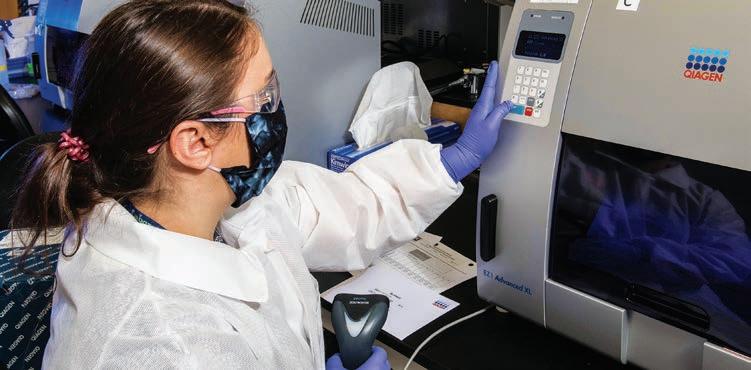
1 minute read
A breath test that can detect liver disease
A company in England has made a test that picks out the compounds from breath that reveal if people have liver disease.
While some people inherit the disease, it’s most commonly caused by hepatitis, obesity and alcoholism.
Advertisement
ese underlying conditions kill liver cells, causing scar tissue to form until eventually the liver cannot function properly. Since 1979, deaths due to liver disease have increased by 400% globally. e sooner the disease is detected, the more e ective treatment can be. But once symptoms appear, the liver is already damaged. Around 50% of cases are diagnosed only after the disease has reached the nal stages, when treatment is largely ine ective.
To address this problem, Owlstone Medical, a bio- tech company in England, has developed a breath test that can detect liver disease earlier than conventional approaches. Human breath contains volatile organic compounds (VOCs) that change in the rst stages of liver disease. Owlstone’s breath test can reliably collect, store and detect VOCs, while picking out the speci c compounds that reveal liver disease.
“ ere’s a need to screen more broadly for people with early-stage liver disease,” says Owlstone’s CEO Billy Boyle. “Equally important is having a test that’s noninvasive, cost e ective and can be deployed in a primary care setting.” e standard tool for detec- tion is a biopsy. It is invasive and expensive, making it impractical to use for people who aren’t yet symptomatic. Meanwhile, blood tests are less invasive, but they can be inaccurate and can’t discriminate between di erent stages of the disease. e team is testing patients in the early stages of advanced liver disease, or cirrhosis, to identify and detect these biomarkers. In an initial study, Owlstone’s breathalyser was able to pick out patients who had early cirrhosis with 83 percent sensitivity.
“ In the past, breath tests have not been widely used because of the di culties of reliably collecting and storing breath. But Owlstone’s technology could help change that.
In the past, breath tests have not been widely used because of the di culties of reliably collecting and storing breath. But Owlstone’s technology could help change that. e sampler can store compounds stably before they are assessed through a method called mass spectrometry, in which compounds are converted into charged atoms, before electromagnetic elds lter and identify even the tiniest amounts of charged atoms according to their weight and charge.
Study participants breathe into a mouthpiece attached to a breath sampler developed by Owlstone. It has cartridges are designed and optimised to collect gases. e sampler speci cally targets VOCs, extracting them from atmospheric gases in breath, to ensure that even low levels of these compounds are captured.










